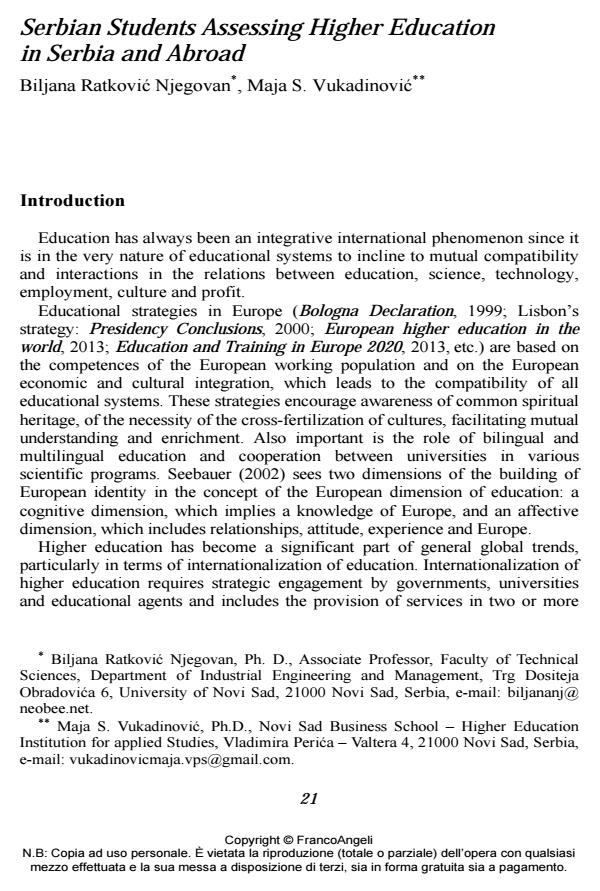Serbian Students Assessing Higher Education in Serbia and Abroad
Journal title CADMO
Author/s Njegovan Biljana Ratkovic, Maja S. Vukadinovic
Publishing Year 2016 Issue 2016/1
Language English Pages 21 P. 21-41 File size 224 KB
DOI 10.3280/CAD2016-001004
DOI is like a bar code for intellectual property: to have more infomation
click here
Below, you can see the article first page
If you want to buy this article in PDF format, you can do it, following the instructions to buy download credits

FrancoAngeli is member of Publishers International Linking Association, Inc (PILA), a not-for-profit association which run the CrossRef service enabling links to and from online scholarly content.
The aim of this study was to investigate the characteristics of higher education systems at different universities. Students who had experience of studying abroad (N= 45) and those who did not have that experience (N= 46) assessed the extent to which education at higher education institutions embedded flexibility, teamwork, collegiality, creativity, cooperation, openness, competitiveness, critical thinking, cognitive skills, knowledge and entrepreneurial spirit in the education process. In addition, the study examined to what extent education at these institutions is characterized by quality, interactivity, an objective system of grading and the professors' availability. Results have shown that students with experience of having studied abroad evaluated the features of studying abroad significantly higher than the features of studying in their home country. These differences in findings were discussed in the context of the theoretical and practical implications relating to an effective higher education system.
Keywords: Internationalization, higher education, effectiveness, students’ experience, Serbia
- Factor structure of the effectiveness of the teaching process in higher education institutions: The perception of students Nataša Papić-Blagojević, Maja Vukadinović, Ana Jovičić-Vuković, in Ekonomija: teorija i praksa /2022 pp.1
DOI: 10.5937/etp2203001P
Njegovan Biljana Ratkovic, Maja S. Vukadinovic, Serbian Students Assessing Higher Education in Serbia and Abroad in "CADMO" 1/2016, pp 21-41, DOI: 10.3280/CAD2016-001004